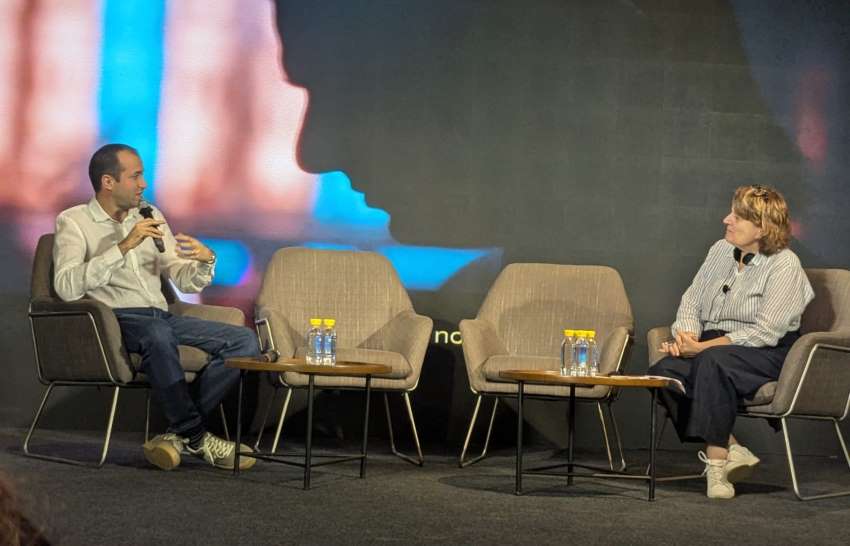Key Takeaways:
1. Bridge-to-luxury is a dominant force in the global fashion market.
2. Regional variations in consumer preferences and market maturity exist.
3. Major brands exhibit mixed performance, with bridge-to-luxury showing strong growth.
4. The outlook for 2024 is cautiously optimistic, with sustained growth anticipated.
Move over, conspicuous consumption. In 2024, luxury is getting a makeover, with a focus on quality, sustainability, and accessibility. The rise of "bridge-to-luxury" fashion is reshaping the industry, blurring the lines between high-end and high-street.
This trend is driven by a growing awareness of fast fashion's environmental and ethical costs, coupled with a shift in consumer values. Shoppers seek today pieces that are well-made, long-lasting, and tell a story. They're willing to invest in quality over quantity, even if it means stepping outside the traditional luxury brands.
Enter bridge-to-luxury. These brands occupy the sweet spot between mass-market and high-end, offering premium materials, sophisticated designs, and elevated craftsmanship at a more accessible price point. Think of it as luxury's "gateway drug," enticing younger consumers with a taste of the good life without breaking the bank.
Forget the days of stratospheric price tags and unattainable exclusivity. The fashion world is undergoing a revolution, and at the forefront is a new breed of brands democratizing luxury: the bridge-to-luxury players. Think Michael Kors, Tory Burch, and Coach – these brands are making high-end fashion accessible to a wider audience, blurring the lines between luxury and everyday wear.
Three years of shifting sands
1. Year 2021: A post-pandemic rebound saw double-digit growth for luxury brands like Louis Vuitton and Hermès, with China leading the charge. Bridge-to-luxury brands like Michael Kors and Tory Burch also thrived.
2. Year 2022: Geopolitical tensions and inflation impacted luxury spending, particularly in Europe. Asia-Pacific remained resilient, with China and Japan holding steady. Bridge-to-luxury brands provided a more value-conscious alternative.
3. Year 2023: Cautious optimism prevailed, with the global luxury market expected to reach €1.4 trillion by year-end. China's growth moderated, while Japan and India emerged as potential bright spots. Bridge-to-luxury brands continued to see sustained demand.
A look at the past three years reveals a nuanced picture for luxe brands
1. LVMH (Louis Vuitton Moët Hennessy): Steady growth of 16 per cent (2021), 23 per cent (2022), and an expected 15 per cent in 2023.
2. Kering (Gucci, Saint Laurent): Impressive growth of 17 per cent (2021), 26 per cent (2022), with a projected 12 per cent in 2023.
3. Capri Holdings (Michael Kors, Versace): Strong growth of 24 per cent (2021), 29 per cent (2022), expected to reach 18 per cent in 2023.
4. Tapestry, Inc. (Coach, Kate Spade): Striking growth of 32 per cent (2021), 25 per cent (2022), with a projected 16 per cent in 2023.
Bridging to luxury, a flourishing market
Nestled between premium and high-end brands, bridge-to-luxury offers quality materials, trendy designs, and a touch of exclusivity at a price point that doesn't break the bank. This resonates with millennials and Gen Z, who value both style and affordability. No longer content with fast fashion, they seek pieces that are well-made, on-trend, and make them feel special.
The impact of bridge-to-luxury goes beyond just fashion. It's a cultural shift that reflects a changing definition of luxury. No longer solely about exclusivity and ostentatious displays of wealth, luxury is now about mindful consumption, conscious choices, and lasting value.
This trend is poised to reshape the fashion landscape for years to come. As bridge-to-luxury brands continue to innovate and cater to the evolving needs of discerning consumers, the lines between high-end and high-street will continue to blur. The future of luxury is one where quality, sustainability, and accessibility reign supreme.
A global phenomenon
The bridge-to-luxury segment is experiencing explosive growth, fueled by rising disposable incomes, urbanization, and the power of social media. By 2025, the global market is expected to reach a staggering €120 billion, at 5 per cent CAGR. China, with its burgeoning middle class, is a major driver while Japan's mature market favors established luxury houses. India, a rising star, is witnessing the ascent of brands like Coach and Kate Spade.
Outlook for 2024: Cautious optimism in a dynamic landscape
Despite geopolitical uncertainties and inflation, the bridge-to-luxury segment's long-term trajectory appears promising. Brands that adapt to evolving preferences, leverage digital platforms, and present compelling value propositions are poised for success.
As the luxury landscape continues to evolve, the bridge-to-luxury segment will play an increasingly pivotal role. Understanding diverse consumer needs and aspirations across regions will enable brands to establish a strong foundation for success in this vibrant and ever-changing market.
And there will be a harmonious coexistence in 2024. Luxury fashion is no longer just about opulent labels and sky-high prices. The bridge-to-luxury segment has emerged as a powerful counterpoint, offering premium quality, trend-driven pieces at accessible price points. This makes luxury an achievable dream for a wider audience, fostering a more inclusive and dynamic fashion landscape.













